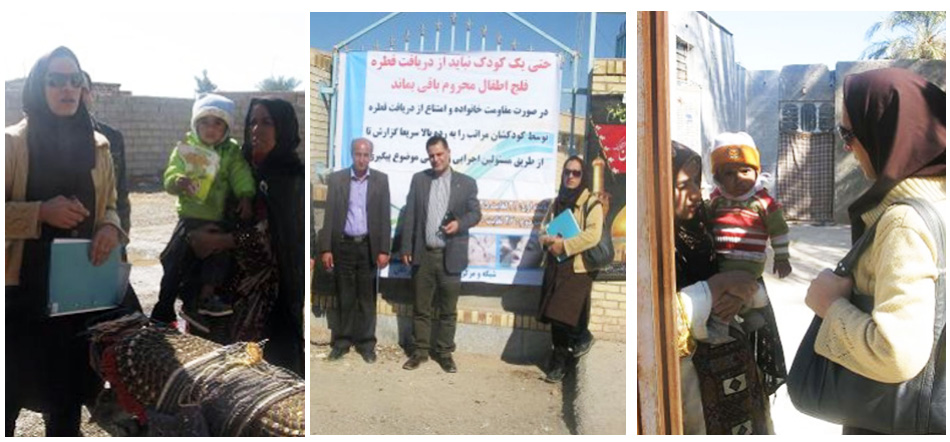Pariva Hashemi talks about her journey as part of Islamic Republic of Iran’s national polio programme

8 March 2022 – It was 1991 and Pariva Hashemi had just started working for the health centre of Semnan province in the Islamic Republic of Iran. Her day started at the break of dawn and sometimes ended late into the night. She spent hours travelling in harsh weather and under difficult road conditions to areas that were far from Semnan. And many times, she had to stay longer at the office to report on new cases of polio in the country.
As a mother, being away from her 2 young children for extended periods of time was not easy, but she knew she had to make this sacrifice to make an important dream come true. She had joined the polio programme with the vision of a day where every child in the world had a healthy body. As an expert on prevention and disease control, she made it her mission to search for where the polio virus was lurking and support polio teams in responding timely.
Islamic Republic of Iran reported its last case of wild poliovirus in 1997. During her time at the national polio programme, Hashemi worked on strengthening the disease surveillance system in the country. This was not an easy feat to accomplish. Islamic Republic of Iran shares 921 kilometres of land border with Afghanistan and 959 kilometres of land border with Pakistan – the only 2 polio-endemic countries. Due to movement of people, chances of virus importation remained high.
“This required utmost sensitivity in disease surveillance and vaccination. We had to make sure that all samples were collected and reported timely and that every child was vaccinated. This meant going the extra mile, across the mountains and deserts to reach every last child, no matter where they were coming from,” explains Hashemi.
All cases of acute flaccid paralysis in children under 15 were promptly detected, reported and sampled through the polio surveillance system. It was the result of these concerted efforts of the entire team that helped them in eradicating polio from the country.
It has been almost 20 years since the country was declared polio-free.
For Hashemi, being a polio worker included more than just timely surveillance. It also meant engaging with communities to educate them on the paralysing and life-threatening effects of the poliovirus.
“A lot of people were unaware of what the poliovirus could do to their child’s health. I am glad that I was able to talk to parents about the risks of poliovirus and encourage them to vaccinate their children. It was not as easy task; we were a strong team of experts in disease prevention and control who had a vision to achieve.
Hashemi retired in 2015 but she is still committed to the cause. She follows the work of the Ministry of Health and Medical Education and partners of the Global Polio Eradication Initiative closely. Due to her extensive experience in the field, she is often consulted by colleagues for her technical expertise.
She wishes for one more dream to come true now: to see the day when the Eastern Mediterranean Region – and the entire world – is polio-free.
While Islamic Republic of Iran reported its last case of wild poliovirus type 1 in 1997, the country has maintained a vigilant surveillance network, particularly in the areas bordering Afghanistan and Pakistan, where isolates of vaccine-derived polio virus have been found in the environment. Additionally, the country continues to implement 2 national vaccination campaigns each year that reach half a million children, including non-Iranians.




